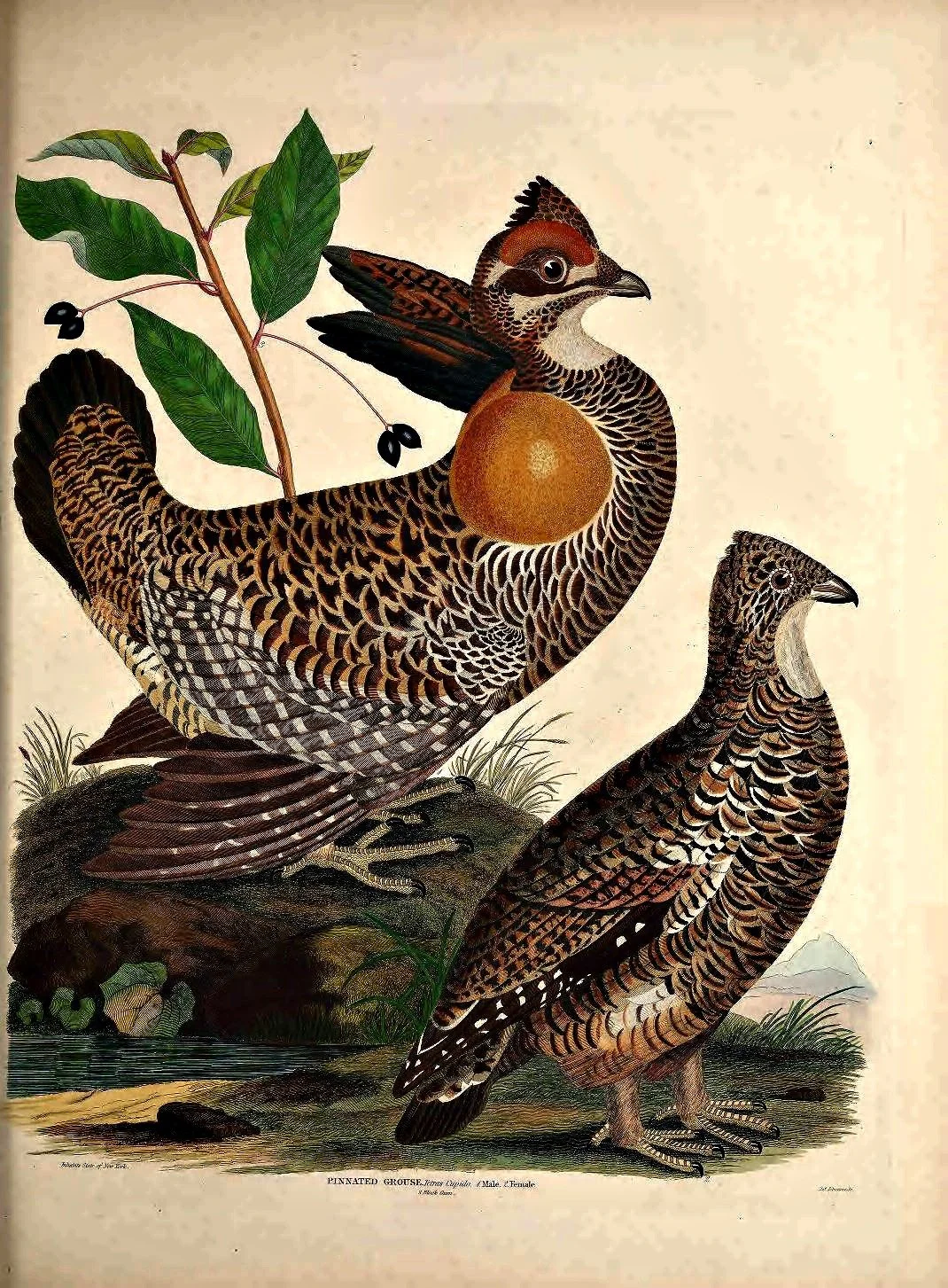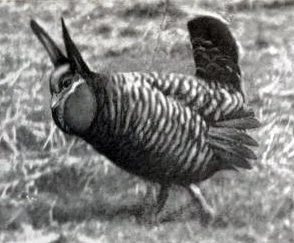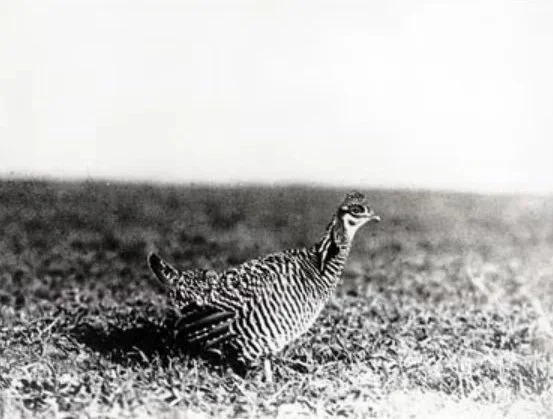Heath Hen
(Tympanuchus cupido cupido)
The ruffed grouse is Pennsylvania’s state bird, admired by birders, nature lovers, and hunters alike. For many, the sound of its drumming display is a hallmark of the Penn’s Woods. But not so long ago, the display of another grouse species, the heath hen, would have been just as iconic to people of the region.
The heath hen was a grouse species native to the eastern seaboard of the United States, ranging from New Hampshire to Virginia. In Pennsylvania, it occupied roughly the eastern third of the state. Unlike the ruffed grouse, the heath hen favored more open habitats, such as heathlands and pine barrens. Slightly larger than the ruffed grouse, it was long considered a subspecies of the greater prairie chicken of western North America, though recent genetic studies suggest it may have been distinct enough to qualify as its own species.
Like its prairie chicken relatives, the heath hen was famous for its lekking behavior, where males would gather in a specific area to display while females visited to select a mate. During these displays, males raised the feathers around their necks to expose large yellow air sacs on either side, producing deep booming calls as they stomped and danced.
From the beginning of European colonization, the heath hen was heavily hunted and is widely believed to have been served at the very first Thanksgiving. Unregulated hunting continued through the colonial era and into early U.S. history. At the same time, the loss of its preferred habitats added further pressure to the species. As early as the late 1700’s, people recognized the bird was in decline. In 1791, New York became the first state to grant the heath hen legal protection, but enforcement of this proved impossible. By the 1870’s, the species had vanished from the mainland, surviving only on Martha’s Vineyard in Massachusetts.
The remaining population on Martha’s Vineyard continued to decline due to hunting pressure and predation from feral cats. Eventually, protections were enacted, and in 1908 a reserve was created specifically for the heath hen. With this protection, the population rebounded to around 2,000 birds, and their lekking grounds even became a tourist attraction.
Tragically, in 1916 a massive fire swept through the reserve, destroying critical habitat and killing roughly 80% of the population. The birds never recovered, despite further conservation efforts. By 1928, only a single male remained, nicknamed “Booming Ben.” Each spring, he returned alone to the lekking grounds, displaying for a mate who would never come. Ben was last seen on March 11, 1932, and is believed to have died soon after at around eight years old.
Following the heath hen’s extinction, several attempts were made to introduce greater prairie chickens to former heath hen habitat on the mainland, but none of those efforts succeeded. In recent years, proposals to introduce prairie chickens to Martha’s Vineyard have also been discussed, though no project has moved forward. At the same time, a small but growing number of researchers have explored the possibility of using genetic material from museum specimens to clone or “de-extinct” the heath hen. While still highly experimental and uncertain, these efforts reflect a lingering hope that the species’ story may not be entirely over.



